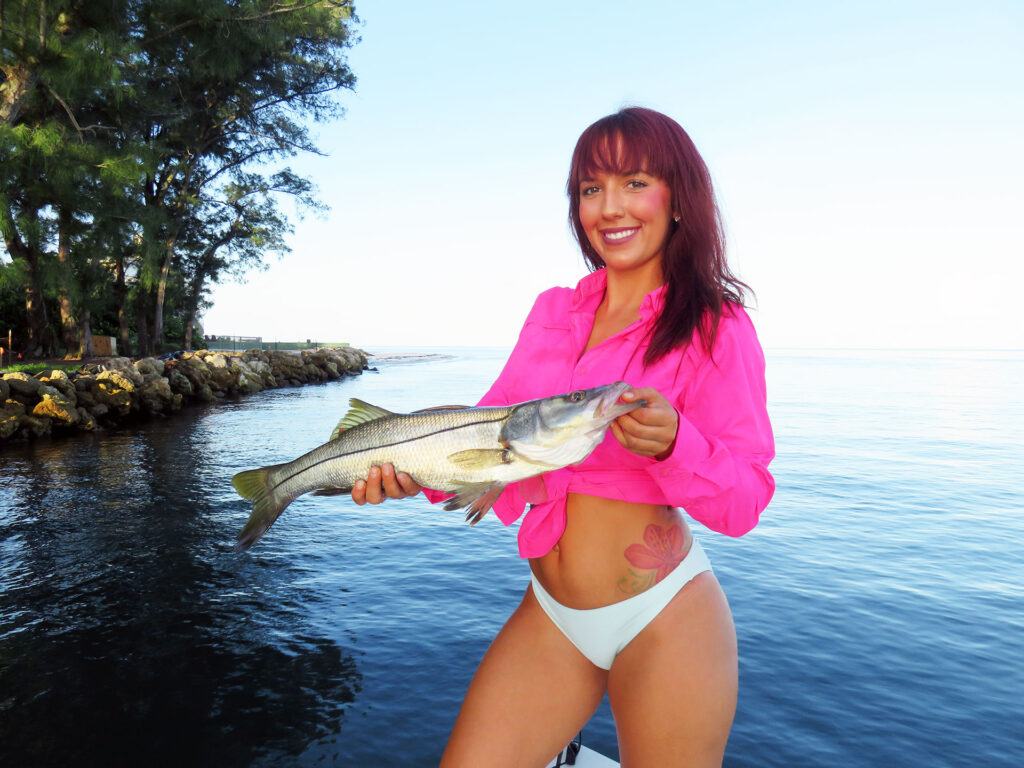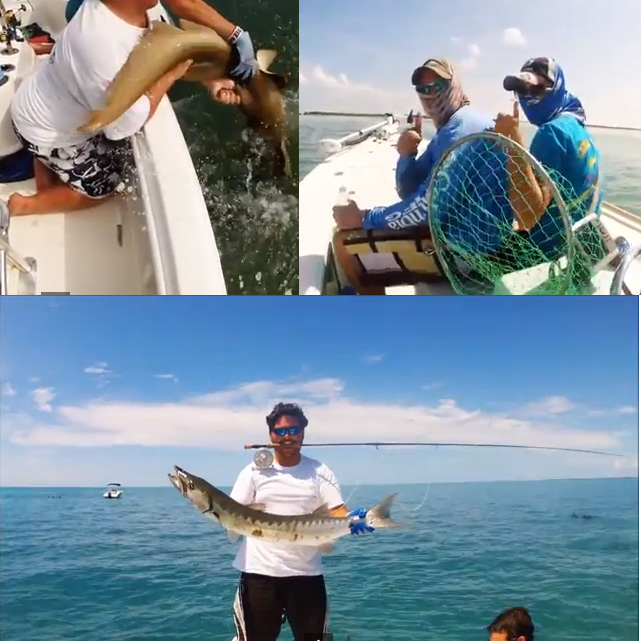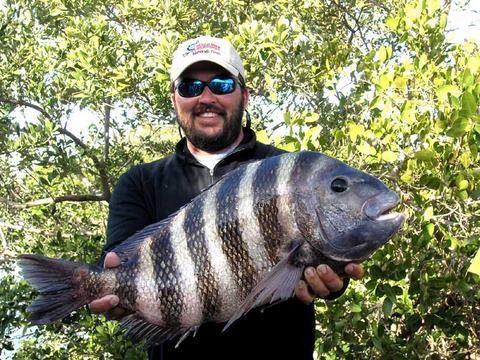Summer is an excellent time of year to target snook on the west coast of Florida. Snook migrate out of the backwater areas and into the passes and out on the beaches during their annual spawning migration. This concentrates the fish in relatively small areas. Snook can be found in large schools this time of year.
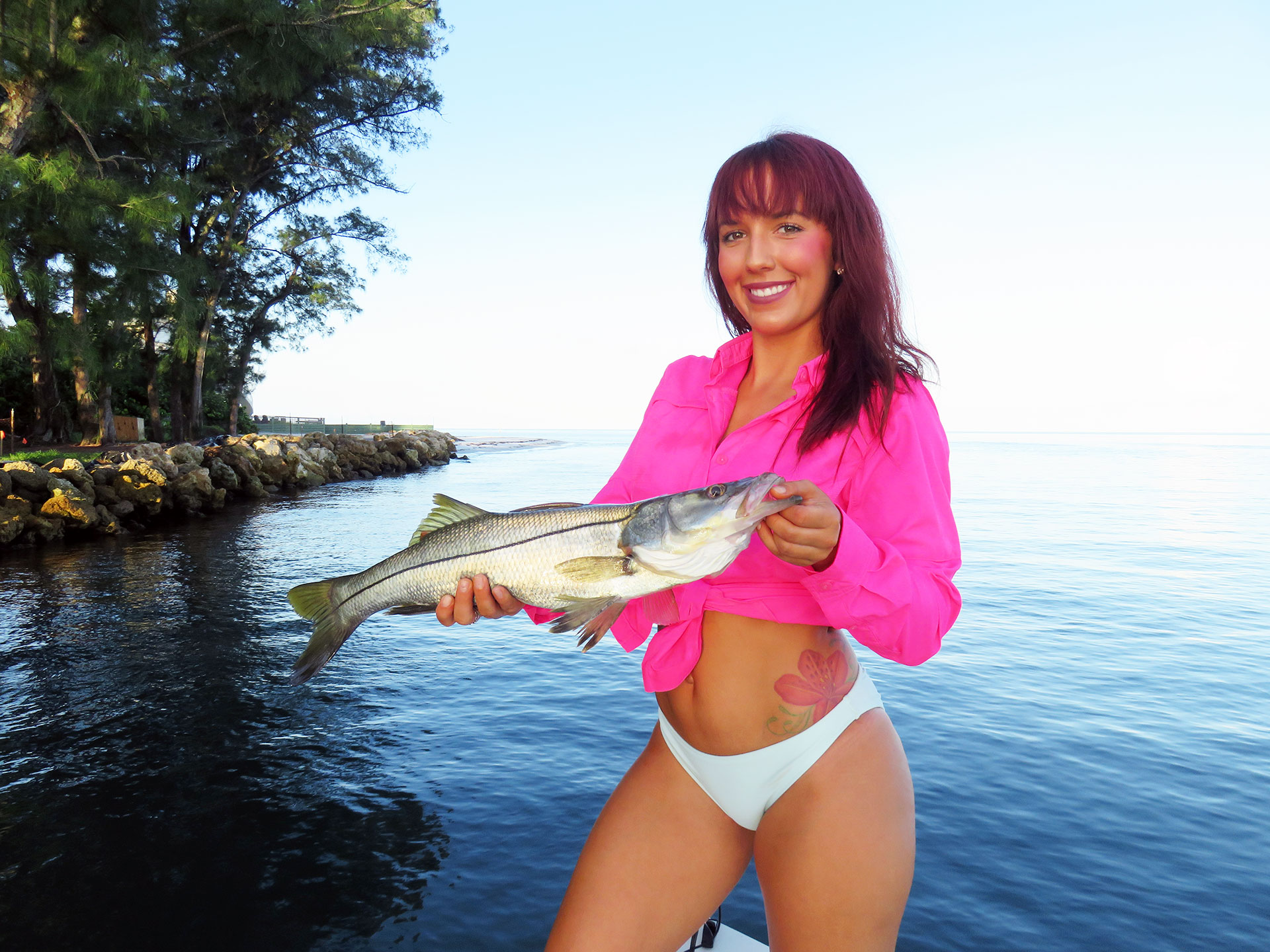
Passes hold a lot of snook from May through September. Structure, current, deep water, and plenty of forage make these natural hot-spots. Docks, bridges, seawalls, rip-rap, and submerged rocks are all prime fish-holding structures. Edges of grass flats that drop off sharply into deeper water are great spots as well. Snook can also be found cruising the sandy beach stretches of the passes.
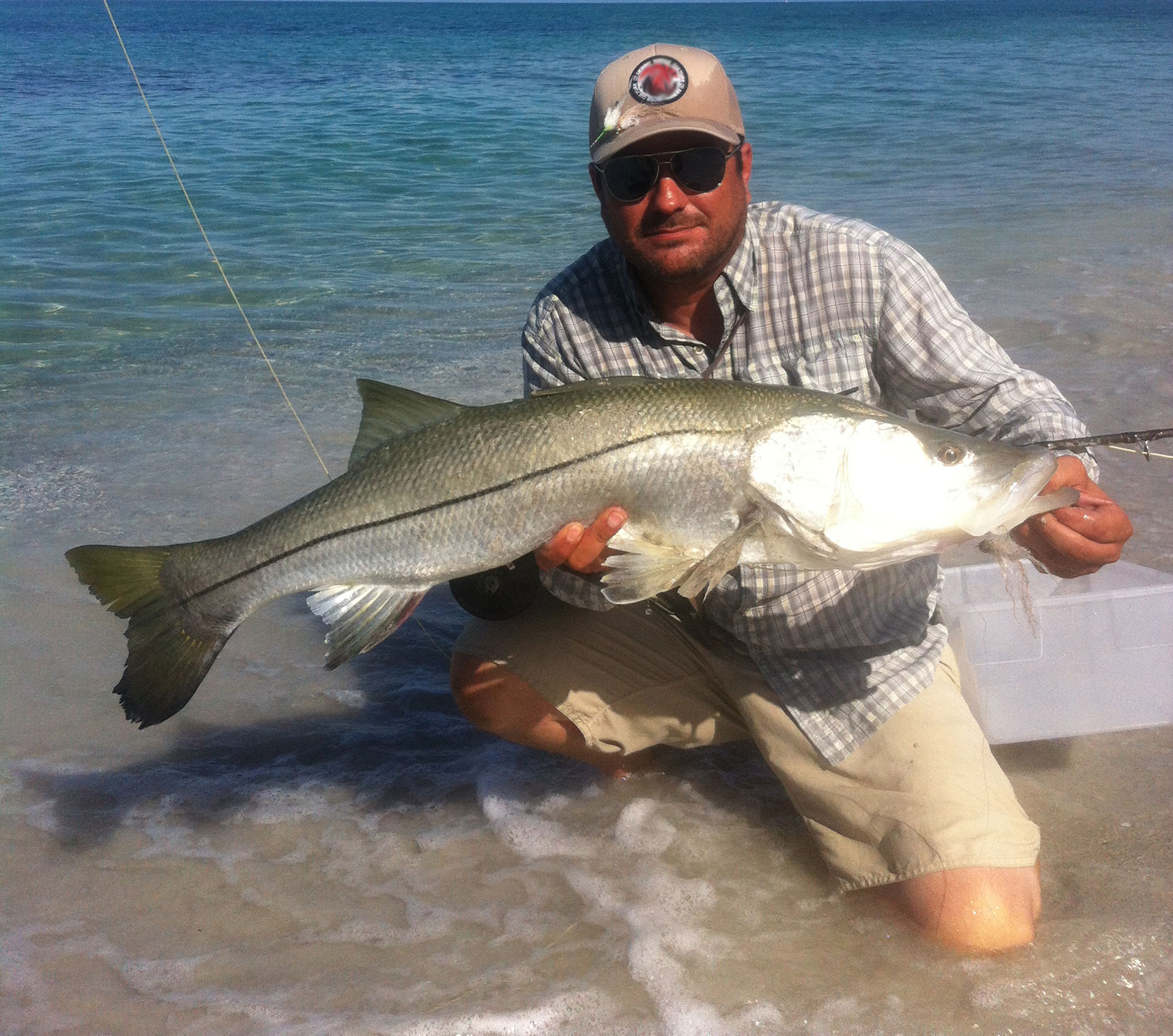
While artificial lures can be effective, live bait really shines in this situation. Bait fish such as pinfish and grunts fished near the bottom, close to structure, will produce some big fish. Heavy tackle and stout leaders are required. Pilchards (scaled sardines) and threadfin herring are excellent baits as well, particularly when combined with some live bait chumming. A large, hand-picked live shrimp is always a good choice.
The best approach is to anchor up-tide of the structure that is being fished. Anglers using larger bait fish will do best using just enough weight to hold the bottom. Pilchards, threadies, and live shrimp can be fished on the bottom or free lined with the tide, depending on current flow. A split shot or two may be required. Outgoing tides early or late in the day and at night are the best times to fish.
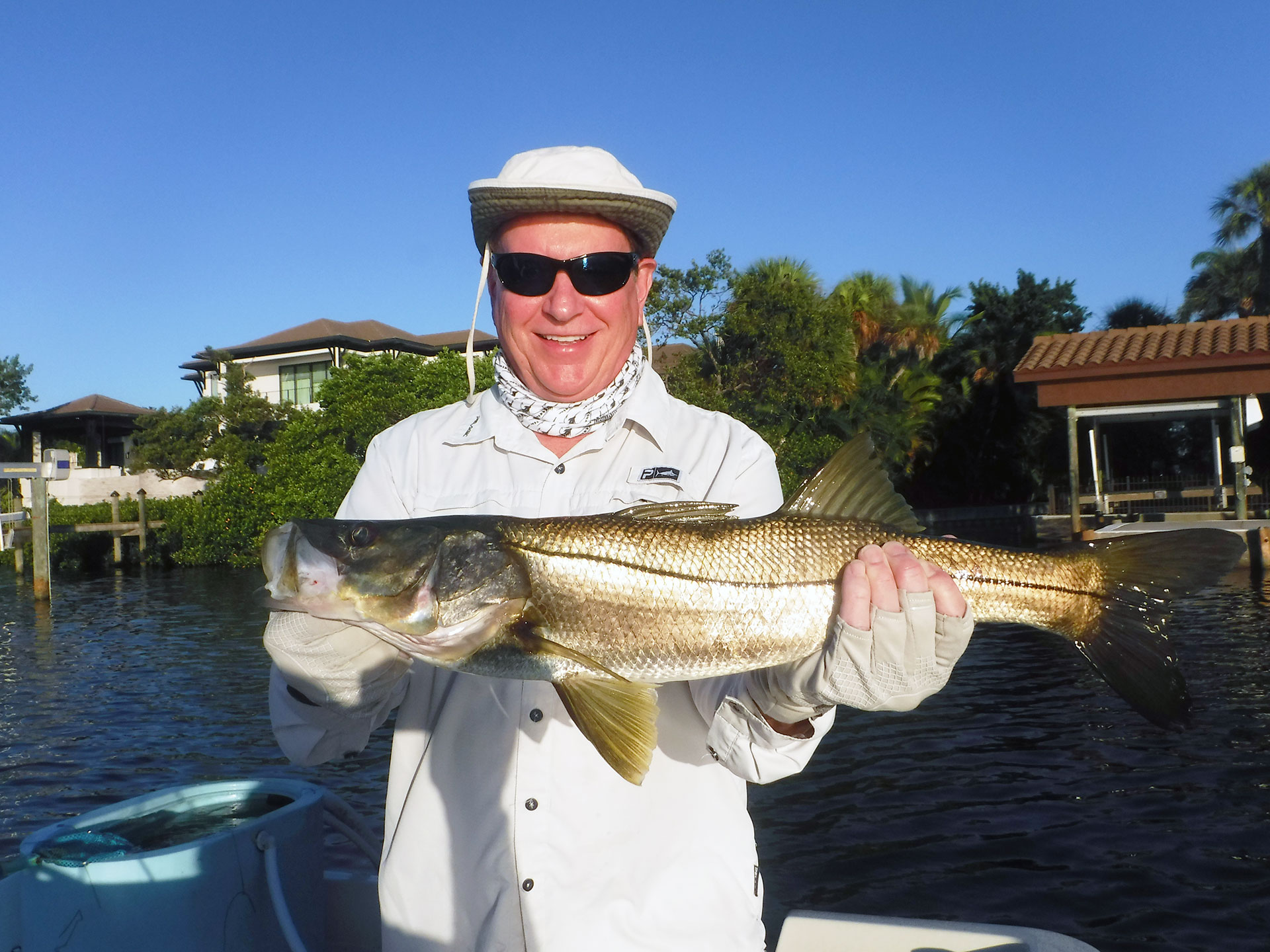
Many anglers use circle hooks to reduce fish mortality. Most of this fishing in done during the closed summer season, so all snook will be released. As in all live bait fishing, the hook size should be matched to the size of the bait, not the fish being targeted. Shock leaders are required due to the sharp gill plates that snook possess. 40 lb flourocarbon test leaders that are 30” long work well.
Artificial lures can certainly be effective as well. The same lures that produce in the back country will fool snook in the passes. Soft plastic baits can be cast towards the cover or vertically fished in deeper water. Plugs, both topwater and diving, can be productive and are great fun to fish.
The west cost of Florida offers anglers a unique fishing opportunity; sight casting to large fish with no boat being required. This is truly some world-class angling! Snook move out onto the beaches in the summer. They can be seen cruising very close to the shore. Many of the fish are average in size, but some trophy sized fish will be encountered as well.
Conditions are important when beach snook fishing. Water clarity, wave height, and sunlight are all contributing factors. The best conditions would be calm seas, clear water, and clear skies. Generally speaking, on the west coast that equates to morning fishing. The sun will be at the anglers back, and east winds are most often present, resulting in flat seas.
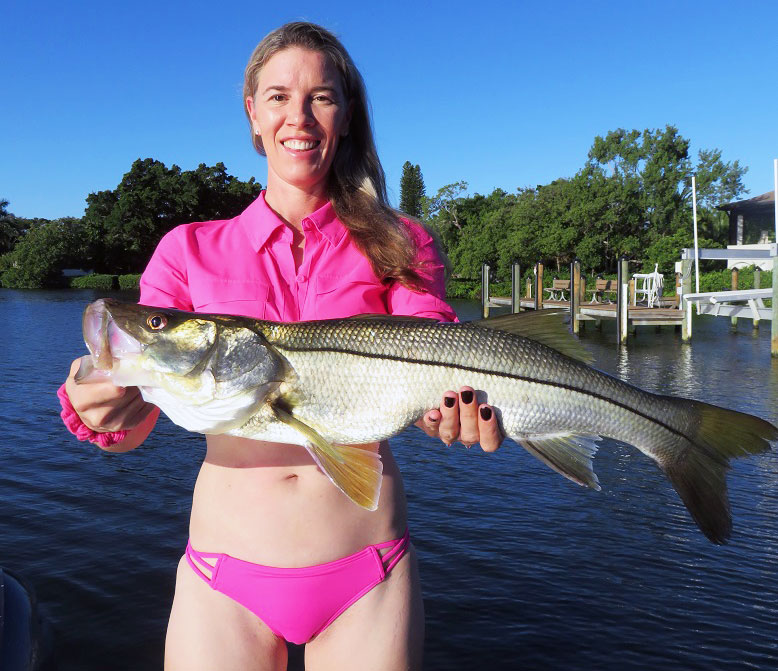
Later in the day, clouds form, the sea breeze turns west, and seeing fish is very difficult. Anglers can certainly catch fish late in the day, but sight fishing is usually not an option. The best approach is to blind cast with lures while walking the beach or to target structure using live bait.
Most anglers sight fishing for snook choose to use artificial lures and flies. Since some walking is involved, it is best to travel light. A 7′ spinning outfit with a 30 lb flourocarbon leader is a good all around choice. With little structure, anglers can go fairly light on the tackle and still land a big fish. A hat, sunglasses, sunscreen, and water complete the equipment list.
Small lures that imitate the bait fish and crustaceans work well. Jigs are tough to beat as they are versatile and effective. 1/8 ounce is a good size, they can be cast far enough yet make a subtle presentation. Soft plastic and hair jigs both work well. White is the most productive color. Small plugs and spoons with catch fish, too.
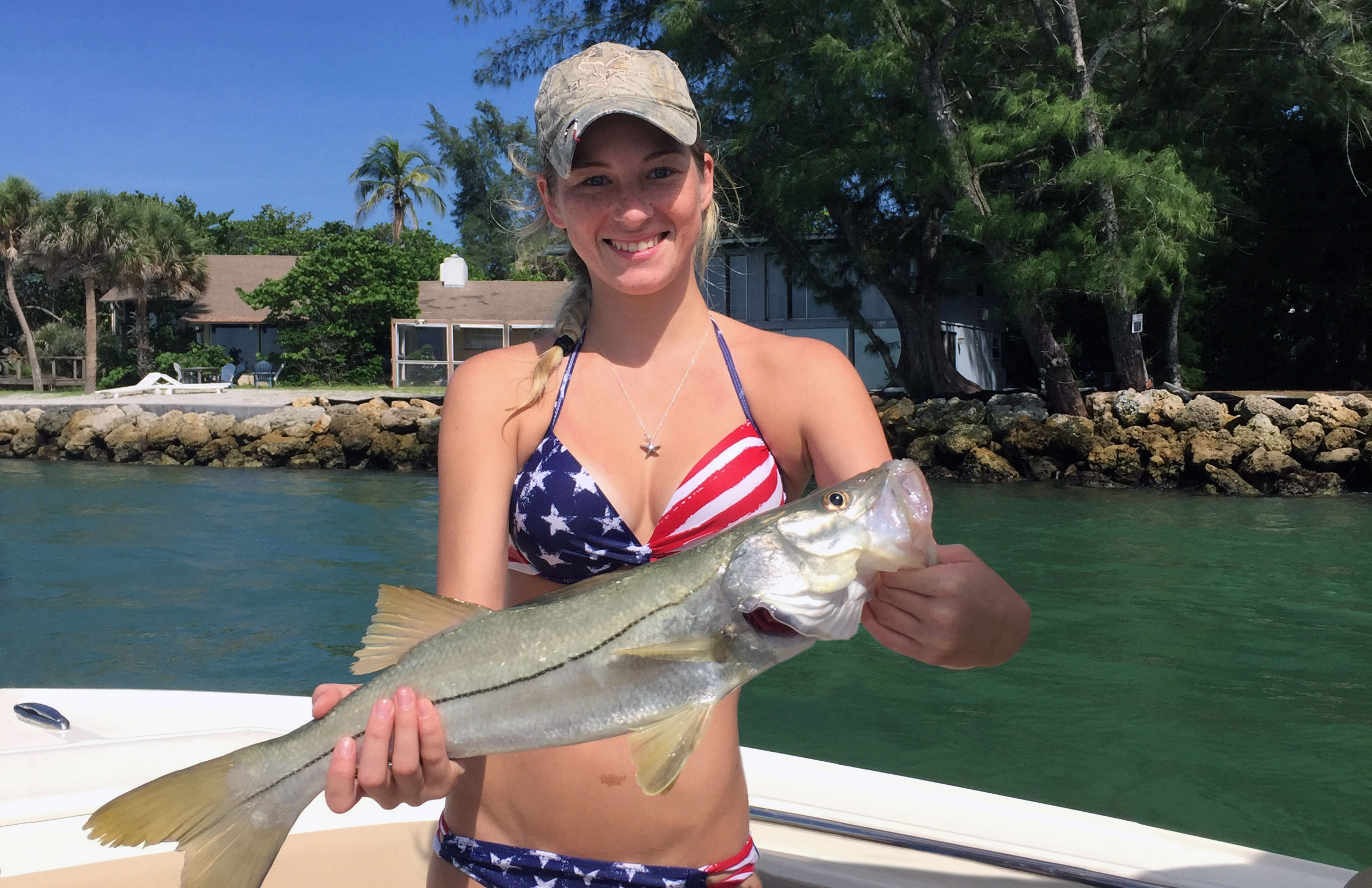
Fly anglers will do well with a 7wt to 9 wt outfit. Intermediate, sink tip lines are versatile and work well on the beach. A long, tapered leader with a short 30 lb bite tippet completes the rig. Any small, white, weighted fly works great. Clouser Minnow, D.T. Special, and Crystal Minnow patterns work well.
The technique is the same for those using both spin and fly tackle. Anglers walk the beach about ten feet from shore. This gives them a slight height advantage looking down into the water. When fish are sighted, the lure or fly is cast out in front of the cruising fish, then worked away from them. Subtle retrieves work better than aggressive ones in most instances. These fish can be spooky in shallow water.
In conclusion, anglers should take advantage of the terrific snook fishing opportunities here on the Suncoast! Anglers seeking a Sarasota fishing charter can contact Capt Jim on his website https://fishinglidokey.com/ .

